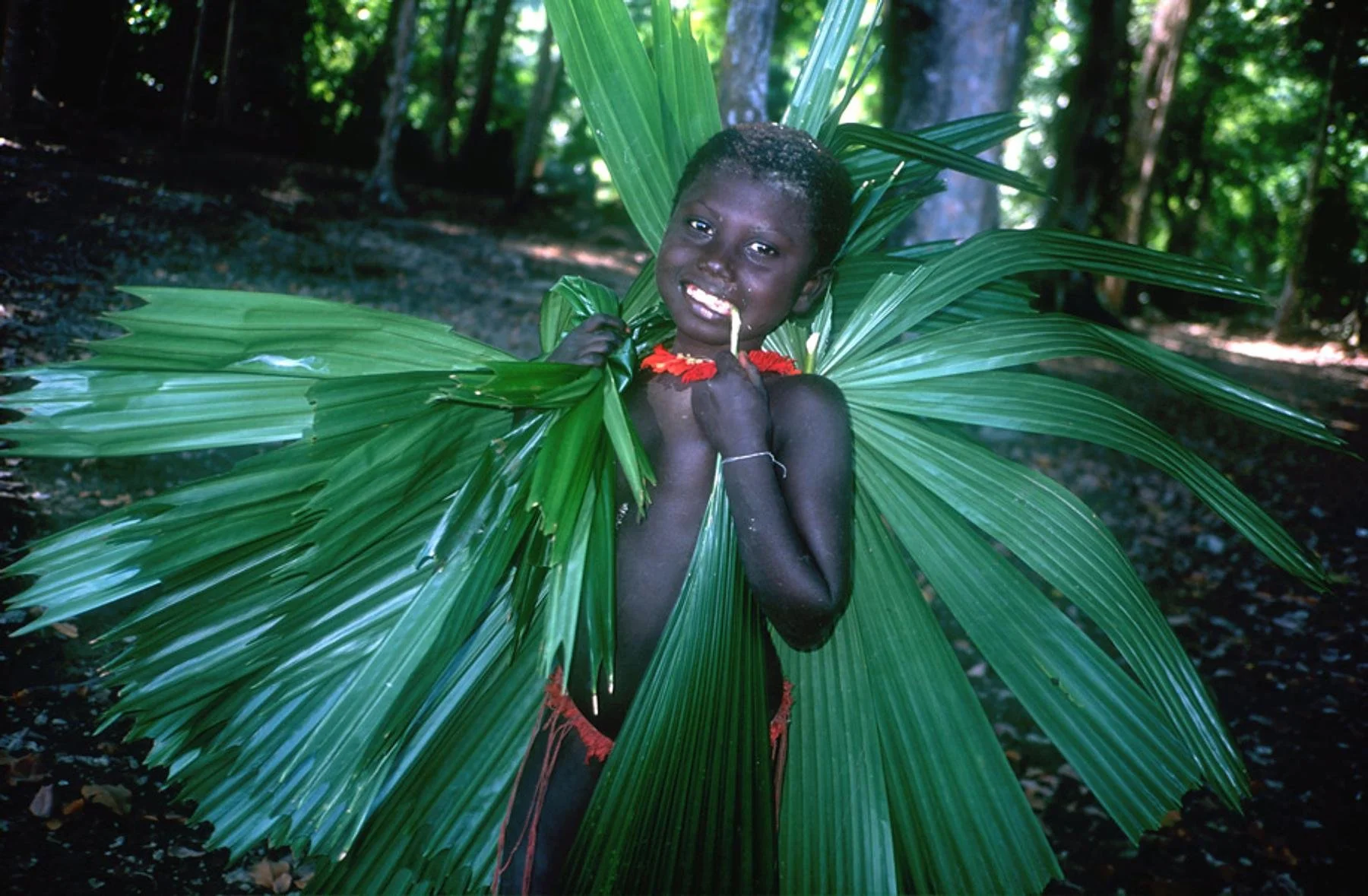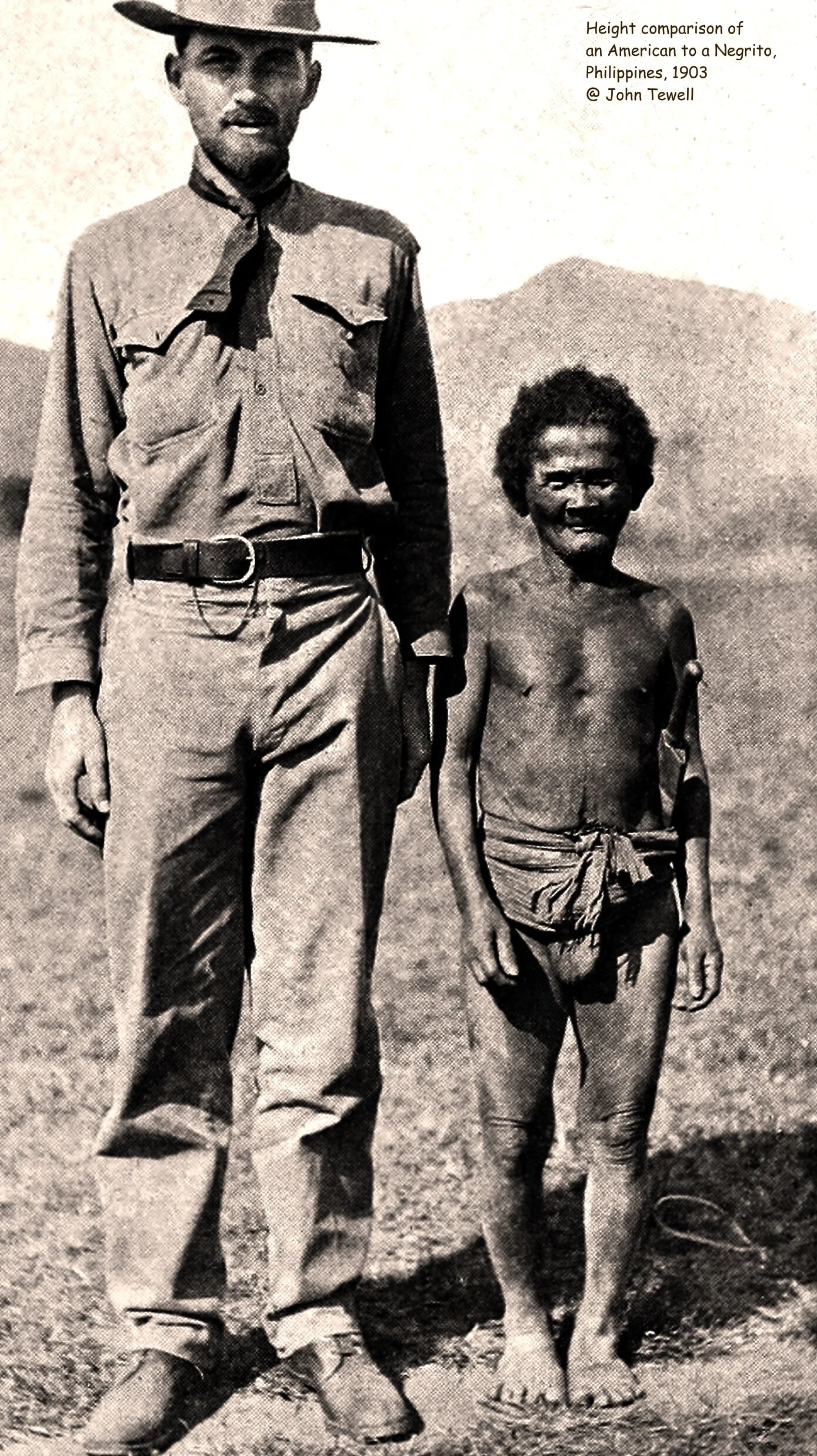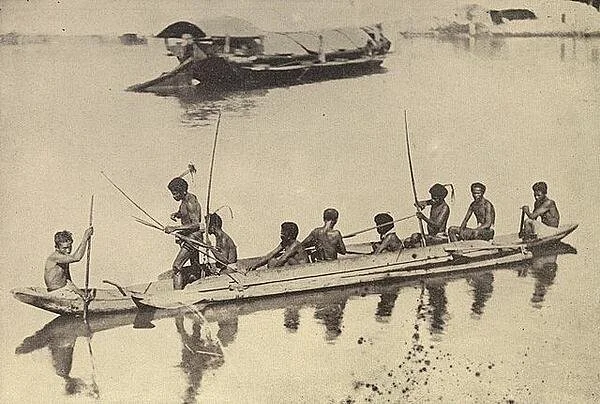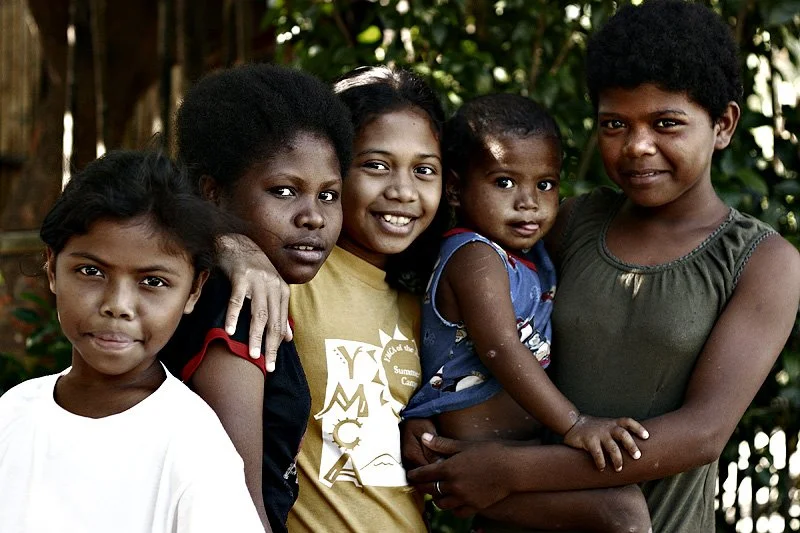Negritos
Origins / Location : Descendants of the earliest human migrations into Southeast Asia from Africa.
Names : First Sundaland People
Languages : Aeta languages: (e.g., Arta, Dupaningan Agta, Northern Alta) / Atta language: (or Inati) / Manide
Religion : Animistic or nature-based religions,


Mountain tribes in the Philippines referred to as Negritos were populous. Analysis of recently discovered, 6,000-year-old human remains in Taiwan supports Taiwanese Negrito legends. 1899 photo of indigenous Philippine Negritos. (Public Domain)
Photo of Philippine Negrito women, circa 1900. The Negrito skeleton found on Taiwan had cranial similarities to those from Luzon, Philippines (Public Domain)
Aeta family, Luzon, Philippines (Oct. 1938 – Feb. 1939). Photograph by Egon von Eickstedt, a German physical anthropologist known for his racial classification work. Image sourced via Flickr
AND SHE SHALL BE QUEEN. It was the Americans who took to the habit of giving royal titles to Negritos, mainly to humor them. This lady for example was dubbed as the “Negrito Queen.” Photo by ALEX CASTRO.
THE LONG AND THE SHORT OF IT. Dean C. Worcester, secretary of interior of the American-administered Philippines, liked being photographed with tiny Negritos for size comparison. Photo by THE DEAN C. WORCESTER PHOTOGRAPHIC COLLECTION.
THE FIRST AMERICAN-BORN NEGRITO. Luis Francis Wilson, born on 19 July 1904 in St. Louis, Missouri. Photo by FIELD MUSEUM OF NATURAL HISTORY.
“EL CAPITAN,” the chief of the Negrito Village at the World’s Fair in St. Louis, amused visitors when he forsook his loincloth for Western fashion. Photo by FIELD MUSEUM OF NATURAL HISTORY.
NEGRITOS AT STOTSENBURG. As co-inhabitants of the reservation, the Negritos were free to roam Fort Stotsensburg and its environs, a source of amusement to Americans who thought them to be gentle, peaceful, and harmless. Photo by ALEX CASTRO.
BASILIO, CHAMPION POLE CLIMBER, was one of the athletic wonders of the 1904 World’s Fair, placing first in the pole climbing contest at the 1st Anthropological Games with a time of 201.25 seconds. Photo by FIELD MUSEUM OF NATURAL HISTORY.
Young Aeta girl from Mariveles, Bataan, circa 1901 — a poignant glimpse into the early 20th-century life of one of the Philippines’ earliest indigenous communities. Her traditional appearance reflects the enduring cultural identity of the Aeta people. Image sourced via the Aeta people Wikipedia page on "The East People,"
The Aeta, considered among the original inhabitants of the Philippines hold diverse spiritual beliefs. Some view their religion as monotheistic, centered on a supreme being who governs lesser spirits or deities. Insight from curator Kwekudee (Oct. 15, 2012), Tema. Sourced via the “Trip Down Memory Lane” blog post
The Aeta family unit, offering a rare visual glimpse into the everyday life of one of the Philippines’ earliest indigenous groups. Insight from curator Kwekudee (Oct. 15, 2012), Tema. Sourced via the “Trip Down Memory Lane” blog post.
An Aeta Magbukún family from Biaan, near Mariveles, Bataan. Photograph by Nathaniel Salang. Sourced from “The Indigenous Aetas of Bataan, Philippines: Extraordinary Genetic Origins, Modern History, and Land Rights” by Mark McHenry, Julia Anwar McHenry, Vincent Balilla, and Riva Parkinson (via ResearchGate).
The Ainu are the indigenous people of northern Japan, especially Hokkaido, with a distinct culture and language that predates the expansion of the Japanese state. While Japan is often seen as historically homogeneous, early 20th-century research, circa 1923, began to uncover the complex cultural and ethnic diversity within the archipelago. This evolving understanding challenges simplified national narratives and highlights the Ainu’s unique heritage. Information sourced via the account “Typical African,” formerly known as Twitter
Two powerful visuals depicting the Aeta people, recognized as one of the earliest African natives of Asia and original inhabitants of the Philippines. These images highlight their rich cultural heritage and enduring legacy. Both images sourced by Thread starter dogman, 31 Jul 2006, Japan reference
Portraits of Ainu types attributed to von Fricken, dating back to the 1890s. These rare photographs were collected by British traveler Charles H. Hawes during his travels through East Asia. Hawes’s work offers valuable historical insight into the Ainu people, an indigenous group of northern Japan. The images are preserved and studied as part of A Good Type – Photographing Ainu Subjects, curated by the Harvard University Peabody Museum of Archaeology & Ethnology.
Images sourced by A Good Type, Photographing Ainu Subjects, Harvard University Peabody Museum of Archaeology & Ethnology.
Ainu Types from the 1890s, attributed to von Fricken. These photographs are part of the collection curated by the Harvard University Peabody Museum of Archaeology & Ethnology.
A glimpse into the timeless spirit of the Ainu. An elder and a woman circa 1900, showcasing a culture and appearance uniquely distinct from mainstream Japan. The Ainu are the indigenous people of Hokkaido and northern Honshu, preserving traditions that echo through generations. Images sourced via Pinterest, account: TERRIENSEUL
Detailed 1901 illustration depicts an Ainu iyomante, a sacred and intricate bear-sending ceremony that holds profound spiritual significance for the Ainu people. The ritual, deeply rooted in Ainu cosmology, was a moment of reverence and respect for the bear spirit, believed to be a divine messenger. The iyomante ceremony captivated both Japanese and European observers at the time, revealing a rich cultural tapestry often overlooked in mainstream histories. Image credit, Ivy Close Images/Alamy Stock Photo. Sourced via ESSAY / IDENTITIES — The Untold Story of Japan’s First People, by Jude Isabella, 25 Oct 2017.












































